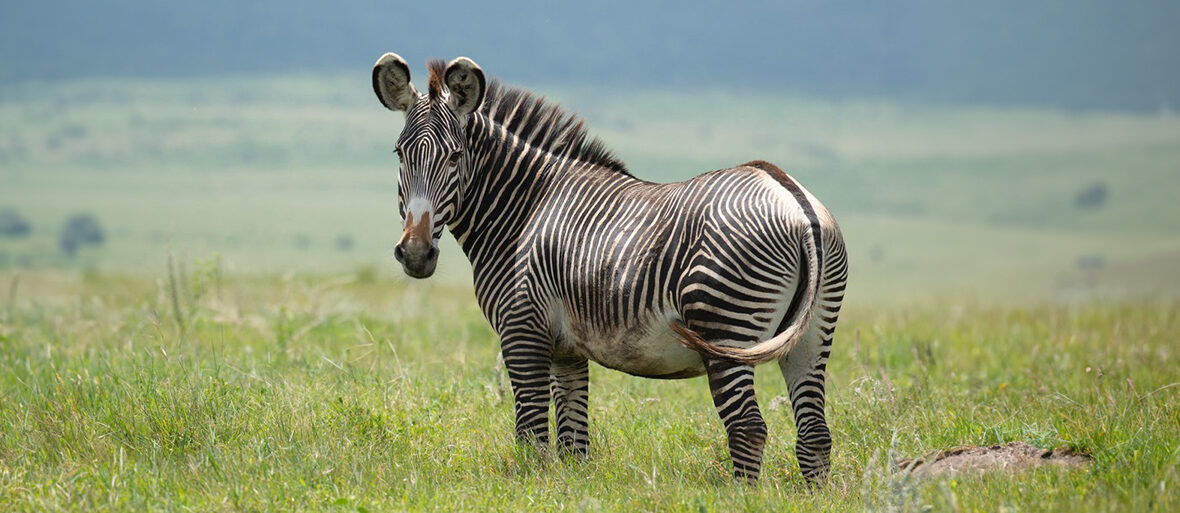
The Grevy’s zebra, aka imperial zebra, hails only from Kenya and Ethiopia. These critters are the largest living wild equid and the most threatened of all of the 3 species of zebra. They prefer semi-arid savanna habitats. Sadly, these equines (horses) are threatened by habitat loss and destruction at the hands of residential and commercial developments, farming, ranching, dams, and water management programs; hunting; trapping; war; civil unrest; and invasive species, that can lead to disease and competition for food. The Grevy’s zebras are listed as Endangered by the IUCN, and their populations are decreasing.
First the Stats…
Scientific name: Equus grevyi
Weight: Up to 990 lbs.
Length: Up to 7.5 feet
Height: Up to 5 feet, at the withers (shoulders)
Lifespan: Up to 13 years
Now on to the Facts!
1.) These zebras were named after Jules Grévy, who was a French lawyer and politician serving as president of France from 1879 – 1887.
2.) As of 2016, there were only 1,956 wild individuals remaining. That number is likely far less today.
3.) They graze on legumes, grasses, and browse (like acacia).
4.) These critters can survive for up to 5 days without water.
5.) Unlike other zebras, Grevy’s zebras do not form harems. Long-lasting social bonds are not often formed.
But wait, there’s more on the Grevy’s zebra!
6.) Anthrax outbreaks in eastern Africa have reaped a terrible toll on these zebras.
7.) The Grévy’s zebra was originally described by French naturalist Émile Oustalet back in in 1882.
Did you know…?
They will roll in mud, dust, and dirt in an attempt to remove parasites.
8.) Normally, stallions tolerate other stallions. That is until a mare in oestrous (in heat) is present, then the territorial stallion keeps other stallions away to guard his breeding rights.
9.) Dominance is shown by displaying an arched neck, with a high-stepping gait, and the subordinate stallions submit by stretching out their tail, lowering their heads, and nuzzling the superior stallion’s chest and/or groin.
10.) These critters produce numerous sounds, such as a deep, hoarse grunt, whistles and/or squeals when startled, alarmed, in fights, or when in pain. Snorts are emitted as a warning or when scared. They will also bray when defending their territory. Barks are produced during mating.
But wait, there’s still more on the Grevy’s zebra!
11.) Females undergo up to a 390 day gestation (pregnancy) that yields a single foal.
12.) Foals are known to follow any creature that moves. So, the mare will often ward off any other mares until she can imprint her scent, striping pattern, and vocalizations on her newborn.
Did you know…?
The Grévy’s zebra is represented on the Eritrean 25 cent coin.
13.) While searching for water, the mare will often leave her foal in what is called a kindergarten until she gets back. During this time, the foal is particularly vulnerable to predation, since they typically don’t hide.
14.) In the 1970s their population was estimated at over 15,000. By the 21st century, they had suffered over a 75% mortality!
15.) There are an estimated 600 Grévy’s zebras in captivity, in zoos around the world.
16.) These zebras are diurnal (active during the day).
Now a Short Grevy’s Zebra Video!
Be sure to share & comment below! Also, check out the Critter Science YouTube channel. Videos added regularly!
Want to suggest a critter for me to write about? Let me know here.
Some source material acquired from: Wikipedia & IUCN
Photo credit: iNaturalist



